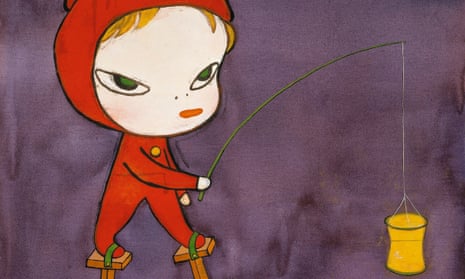Fight the power …
This early work from 1995 has all the ingredients that have made Nara a pop art star: a cute little girl with a big head and wide eyes, whose defiant glare and seriousness of purpose speak volumes about childhood experience. That is, the battle of the weak against the powers that be.
Rebel girl …
The stilt-walking, lantern-bearing waif references 18th-century ukiypo-e printmaker Suzuki Harunobu. Nara riffs on his images of pliant courtesans with a badass little kid.
Mr Lonely …
His girls have rock’n’roll rebel spirit, but at heart are always loners. The isolated figures are rooted in his solitary childhood in Japan, reading comic books and forming a healthy music addiction, and a move to Germany where his communication depended on a few essential phrases.
Everybody hurts …
The world has since been conquered by these little girls, who grace album covers by the likes of REM and Japanese punk greats Shonen Knife.
Yoshitomo Nara by Yeewan Koon (published by Phaidon) is out now

